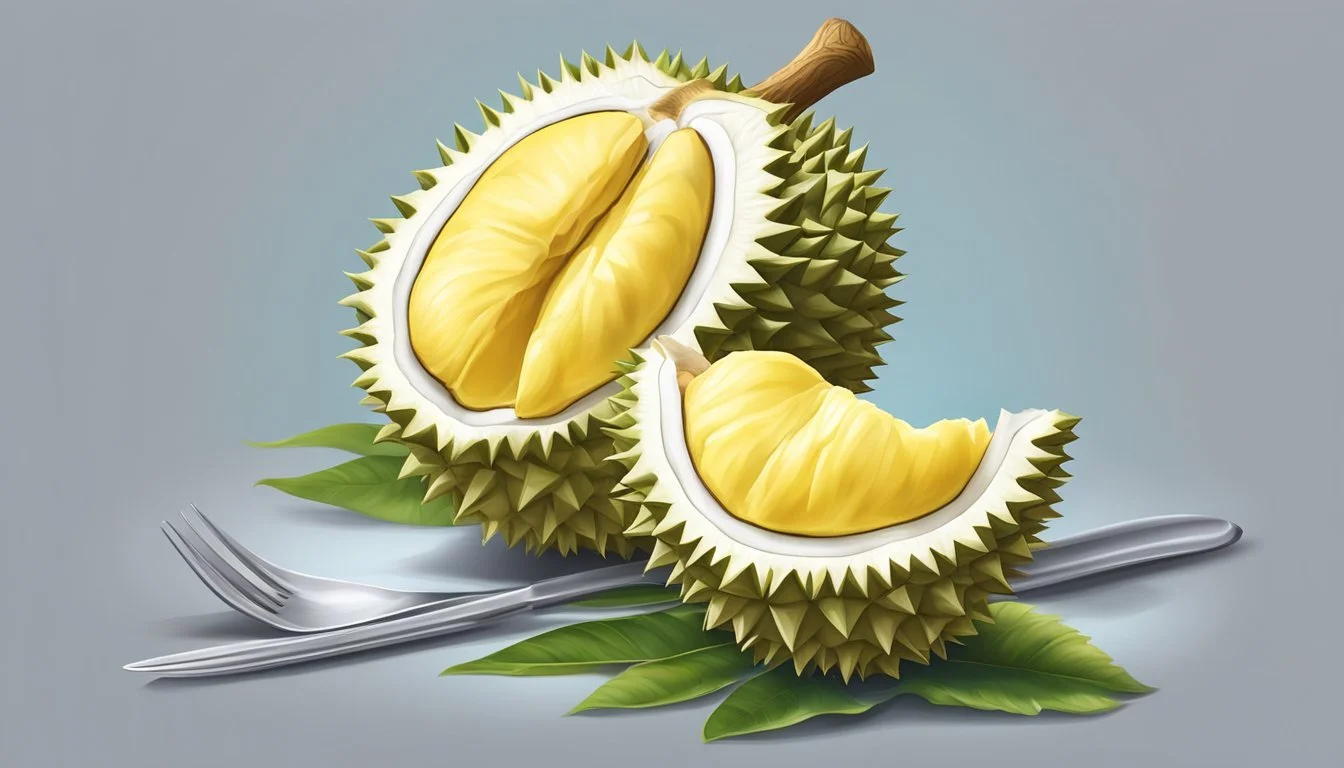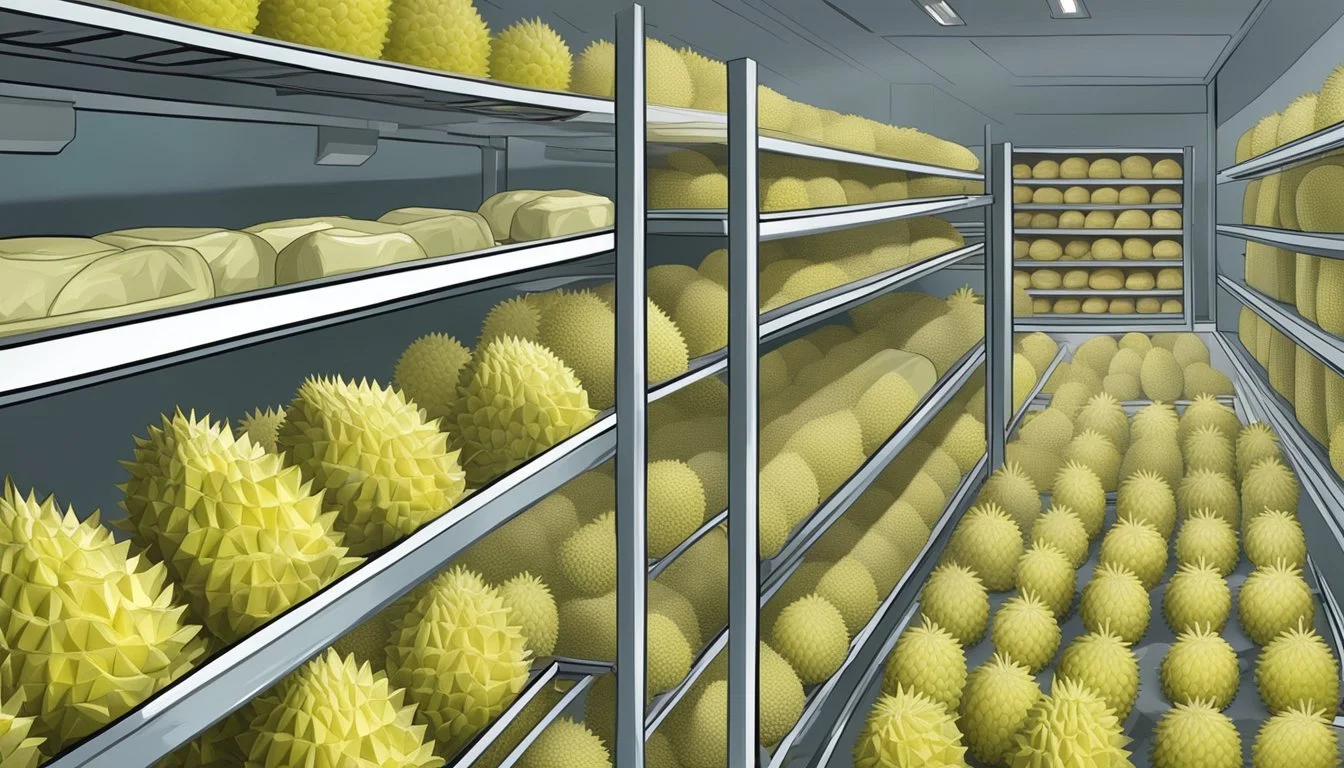Frozen vs Fresh Durian: Comparing Flavor, Texture, and Convenience
Durian, known as the "King of Fruits" in Southeast Asia, captivates taste buds with its distinctive aroma and unique flavor. This tropical delicacy offers a creamy, custard-like texture that has garnered both devoted fans and curious skeptics worldwide. While fresh durian remains the traditional choice, frozen options have gained popularity in recent years.
The main difference between fresh and frozen durians lies in their preservation time, with fresh durians typically lasting 1-2 weeks after harvest, while frozen varieties can be stored for up to 18 months. This extended shelf life allows durian enthusiasts to enjoy the fruit year-round, even during off-seasons. However, the freezing process may impact the fruit's texture and subtle flavor nuances.
When choosing between fresh and frozen durian, consumers must consider factors such as availability, convenience, and personal preferences. Fresh durian provides an authentic experience with its full range of flavors and aromas, while frozen durian offers accessibility and longer storage options. Both varieties maintain the fruit's nutritional benefits, ensuring a delightful and satisfying indulgence for durian lovers.
Comparing Fresh and Frozen Durian
Fresh and frozen durians offer distinct experiences in taste, texture, and nutritional content. Both options have their merits, catering to different preferences and situations.
Taste and Flavor Profile
Fresh durians boast an intense, complex flavor profile. Their creamy flesh delivers a rich combination of sweet and savory notes. Some describe hints of caramel, almond, and even garlic undertones.
Frozen durians retain much of their original taste, though some subtleties may be lost. The freezing process can slightly mute the fruit's signature aroma. However, many still find frozen durians satisfying, especially when fresh ones are unavailable.
Both varieties offer a unique balance of flavors. Fresh durians provide a more vibrant taste experience, while frozen options maintain a similar profile with slightly diminished intensity.
Texture and Consistency
Fresh durians have a soft, custard-like texture. Their flesh is typically smooth and creamy, melting in the mouth. The consistency can vary depending on ripeness, with some preferring slightly firmer fruit.
Frozen durians undergo textural changes during the freezing process. Upon thawing, they may become slightly stringier or less creamy than their fresh counterparts. Some compare the texture to a dense ice cream.
Despite these differences, many still enjoy frozen durians. Their altered texture can be appealing in certain dishes or as a cool treat.
Nutritional Value
Both fresh and frozen durians offer similar nutritional benefits. They are rich in vitamins, minerals, and fiber. Durians contain vitamin C, potassium, and vitamin B6.
Fresh durians may have a slight edge in preserving heat-sensitive nutrients like vitamin C. However, the difference is often minimal. Both types provide a good source of carbohydrates, protein, and healthy fats.
Durians are calorie-dense fruits. They offer antioxidants and potential health benefits. Neither fresh nor frozen durians contain cholesterol. The nutritional content remains largely intact in both forms, making either choice a nutrient-rich option.
Storage and Shelf Life
Fresh and frozen durians have distinct storage requirements and shelf lives. Proper storage methods and environmental factors play crucial roles in maintaining their quality and flavor.
Proper Storage Methods
Fresh durians should be stored at room temperature until ripe. Once ripe, refrigerate them to extend shelf life for 5-7 days. For longer storage, freeze durian flesh in airtight containers or freezer bags. Remove excess air to prevent freezer burn.
Frozen durians can be stored in the freezer at -18°C for up to 18 months. Whole frozen durians and durian seed pulps maintain quality for this duration. Frozen durian paste may have a slightly shorter shelf life.
Always use clean, dry containers for storage. Wrap cut durian segments tightly in plastic wrap or foil before refrigerating.
Factors Affecting Longevity
Temperature is a key factor in durian longevity. Higher temperatures accelerate ripening and spoilage. Humidity levels also impact shelf life, with excessive moisture promoting mold growth.
Exposure to air speeds up deterioration. Minimize air contact by using airtight containers or vacuum-sealed bags. Light can degrade durian quality, so store in opaque containers or dark areas.
Handling affects durian longevity. Bruising or damage to the fruit's exterior can lead to faster spoilage. Choose undamaged fruits for longer storage.
Ripeness at harvest influences storage potential. Fully ripe durians have a shorter shelf life compared to those harvested slightly underripe.
Culinary Applications
Durian's unique flavor profile makes it a versatile ingredient in various dishes. Its creamy texture and rich taste lend themselves well to both sweet and savory preparations.
Durian-Based Desserts
Durian ice cream stands out as a popular treat, blending the fruit's pulp with milk, sugar, and vanilla extract. Chefs often use a blender to achieve a smooth consistency. Durian pancakes offer another delightful option, featuring a thin crepe wrapped around fresh durian pulp.
Durian smoothies provide a refreshing twist, combining the fruit with milk or yogurt. Some recipes incorporate bananas or mangoes for added sweetness. Durian cakes and pastries are common in Southeast Asian bakeries, showcasing the fruit's ability to enhance traditional desserts.
Incorporating Durian in Recipes
Beyond desserts, durian finds its way into savory dishes. Chefs use its pulp to create rich sauces for meat dishes or as a filling for dumplings. In Thailand, ripe durian is sometimes stir-fried with shrimp paste and chilies.
Durian can replace dairy in vegan recipes, offering a creamy texture to curries and soups. Its strong flavor pairs well with coconut milk in savory applications. Some adventurous cooks even use durian as a pizza topping or in fusion dishes like durian sushi rolls.
Considerations for Buying Durian
When purchasing durian, several factors come into play that can impact your selection and overall experience. These include the fruit's seasonality, price determinants, and methods for choosing the best durian.
Seasonality and Varieties
Durian's availability varies throughout the year in Southeast Asia. The main season typically runs from June to August, with a smaller harvest from December to February. Thailand, Malaysia, Indonesia, and the Philippines are major producers.
Popular varieties include Musang King, known for its creamy texture and bittersweet flavor. Red Prawn offers a distinctive reddish-orange flesh with a sweet taste. Monthong, or "Golden Pillow," is prized for its mild flavor and large size.
Off-season durians are often more expensive due to limited supply. Some varieties, like Kan Yao from Thailand, have shorter availability windows, making them highly sought after.
Factors Influencing Price
Durian prices fluctuate based on several variables. Supply and demand play a significant role, with prices typically higher during off-peak seasons.
Quality and variety greatly impact cost. Premium varieties like Musang King command higher prices due to their superior taste and texture. Weather conditions affecting crop yields can also drive up prices.
Transportation costs contribute to durian's expense, especially when sold in international markets. Fresh durians often cost more than frozen ones due to their limited shelf life and shipping challenges.
How to Select and Buy Durian
Selecting a good durian requires attention to detail. Look for fruits with intact, greenish-brown spikes. Avoid those with soft spots or visible cracks.
A ripe durian emits a strong aroma from its stem end. Gently press the skin between the spikes; it should yield slightly if ripe.
When buying pre-packaged durian, check for any signs of freezer burn or ice crystals, which may indicate poor storage. Many Asian markets offer both fresh and frozen options.
For those new to durian, starting with milder varieties like XO or Monthong can be a good introduction. Some sellers offer durian delivery services, allowing you to enjoy this unique fruit at home.
Cultural and Regional Significance
Durian holds a revered place in Southeast Asian culture and cuisine, with deep-rooted traditions and regional preferences shaping its status as the "King of Fruits."
Durian as a Cultural Icon
The spiky Durio zibethinus is more than just a fruit in Southeast Asia. It features prominently in folklore, art, and literature across the region. Ancient bas-relief panels at Indonesia's Borobudur temple complex depict durian, highlighting its historical importance. The fruit's distinctive fragrance and flavor have inspired poetry, idioms, and gastronomic tales.
Durian symbolizes abundance and prosperity in many cultures. Its presence at social gatherings and festive occasions reinforces its cultural significance. The fruit's divisive nature - loved by some, loathed by others - has made it a subject of cultural discourse and a marker of local identity.
Regional Preferences
Different Southeast Asian countries have unique preferences for durian varieties and preparation methods. In Malaysia, the Musang King cultivar is highly prized for its creamy texture and intense flavor. Thailand is known for its Mon Thong durian, popular for its sweet taste and less pungent odor.
Indonesia boasts numerous local varieties, each with dedicated followers. The Philippines favors the Puyat durian for its balance of sweetness and bitterness. These regional preferences reflect local tastes and agricultural traditions.
Fresh durian is the gold standard in most Southeast Asian countries. However, frozen durian has gained popularity, especially in export markets. It offers a milder taste and scent, making it more accessible to newcomers to the fruit.




